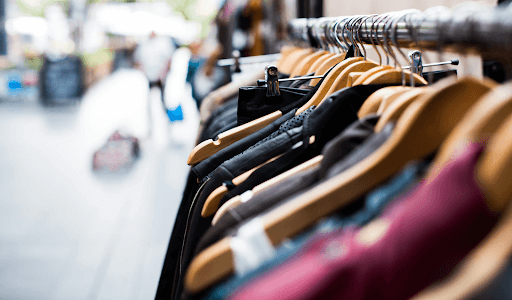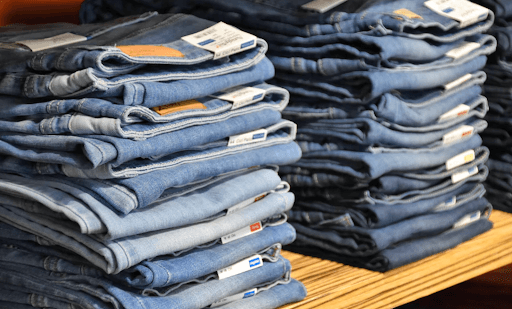
Many people are curious about the impact of used clothing bales on small businesses worldwide. It is surprising to learn that these bundles of secondhand clothing are helping small businesses to empower themselves, create new markets, and expand their operations. The used clothing bales industry provides an affordable option for people in developing countries looking for clothing options. Also, it positively impacts the environment by reducing the amount of clothing that ends up in landfills.
With the rise of technology and the ease of importing and exporting, the used clothing bales industry has become an increasingly important sector for small businesses worldwide.
This topic delves into the various subtopics associated with the used clothing bales industry, including the economic impact on small businesses, the environmental benefits, the sorting and grading process, and the challenges and opportunities associated with importing and exporting these bales.
Small Business Economic Effect From Used Clothing Bales
Old clothing bales have exerted a significant economic influence on many developing countries’ small companies. These bales have helped to develop new markets and promote sales for small enterprises by providing affordable apparel options to local people. Furthermore, because these bales are inexpensive, small enterprises can boost their profitability and reinvest in their businesses.
Furthermore, the used clothes bales sector employs individuals in the supply chain stages of sorting, grading, and distribution. Small enterprises in some nations have even successfully established themselves as essential actors in the market, shipping old clothes bales to other regions and generating global cash. Yet, there are also drawbacks to this industry, such as rivalry from larger enterprises and a need for more laws in some locations.
The Environmental Advantages Of The Used Clothing Bales
Used clothing bales have considerable environmental benefits since they reduce the quantity of clothing in landfills. Instead of being discarded, secondhand clothes are cleaned and graded according to quality before being sold to purchasers who distribute the apparel to consumers in developing countries. Used clothing bales lessen the impact on the environment of clothes manufacturing and disposing of it by prolonging the usefulness of clothing.
Furthermore, because the clothes have a current circulation and therefore do not require different manufacture, transporting used clothing bundles has a more negligible carbon impact than transporting new clothing. Furthermore, the business can minimize textile waste, which is becoming increasingly problematic worldwide. Some critics, however, say that the used clothes bales industry can have severe environmental repercussions, such as the disposal of lower-quality garments in underdeveloped nations or the development of a disposable clothing culture.
The Procedure For Sorting And Classifying Used Clothes Bales
After the clothes are gathered, they are sorted by quality; some are sold as antique or high-end, and others as bulk or “rag” material. This sorting procedure includes meticulously examining each item of clothing’s condition and estimating its market price.
After sorting, the clothing is evaluated depending on the quality and bundled into bales for transport. A thorough garment analysis, such as its fabric type, color, and condition, is part of the grading process. The bales are tagged and sent to purchasers distributing the apparel to developing-country consumers.
While the selecting and grading procedure is time-consuming, it is an essential phase in the used clothing bales business since it guarantees that the clothing is of a good standard for resale and helps preserve the industry’s reputation.Finally, the trade in used clothes bales has helped generate new markets, minimize textile waste, and supply people in developing nations with affordable clothing options, making it profitable for both.
Importing And Exporting Old Clothing Bales: Difficulties And Possibilities

While the used clothes bales sector has given many environmental and economic advantages, shipping and importing these bales has its own obstacles. One of the most significant problems is competition from larger enterprises and a need for more controls in some locations. Small firms may need help competing with larger corporations with a greater number of resources and negotiation power. Furthermore, a lack of oversight in some areas can result in unethical practices, such as selling low-quality garments in underdeveloped countries.
Nonetheless, there are chances in the used apparel bales industry for small firms. Small firms can now establish themselves as significant actors in the market, selling old clothes bales to these other countries and making cash on a worldwide scale, thanks to the advancement of technology and the simplicity of importing and exporting. Furthermore, there is an increasing need for environmentally friendly and ethical apparel solutions, which allows small enterprises to stand out in the market.
The Cultural And Sociological Relevance Of Used Clothing In Various Regions
The cultural and societal importance of secondhand clothing differs by area. Secondhand clothing is condemned in certain cultures as a symbol of poverty, while others value it as a signal of resourcefulness and innovation. Secondhand clothing has become a vital part of the indigenous fashion industry in several countries, such as Africa and Asia, with innovative designers incorporating old clothing into their designs.
Additionally, the trading in used clothing bales has had a social impact by providing different affordable outfits to people in underdeveloped nations who otherwise would not have the opportunity to buy fresh clothing. This has aided in developing new markets and increased sales for small firms. Furthermore, recycling and reusing used clothes have become an essential part of sustainable fashion, contributing to reducing textile waste. However, there are concerns about the impact on the environment of carrying old clothing across large distances and the possible harm to the local textile industry.
Conclusion
The industry of used clothing bales has significantly impacted small enterprises and the environment worldwide. While importing and exporting these pre-used clothing bales presents challenges, such as rivalry from more giant corporations and a need for regulations in some regions, there are also chances for small companies to establish themselves inside the international economy and also provide ethical and environmentally friendly clothing solutions. Secondhand clothing’s cultural and social meaning differs by location, with some applauding its resourcefulness and originality while others stigmatizing it as a sign of poverty.







